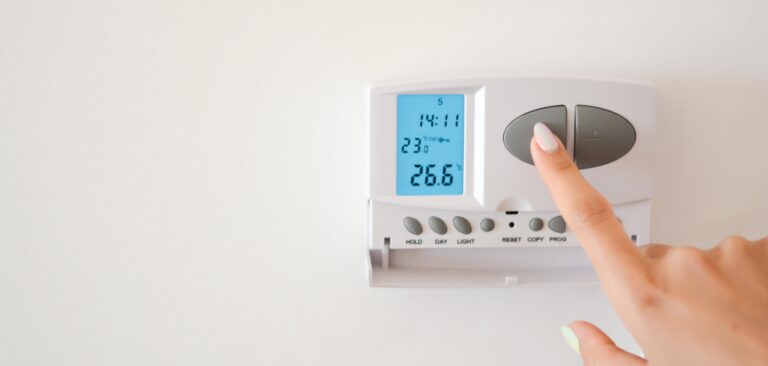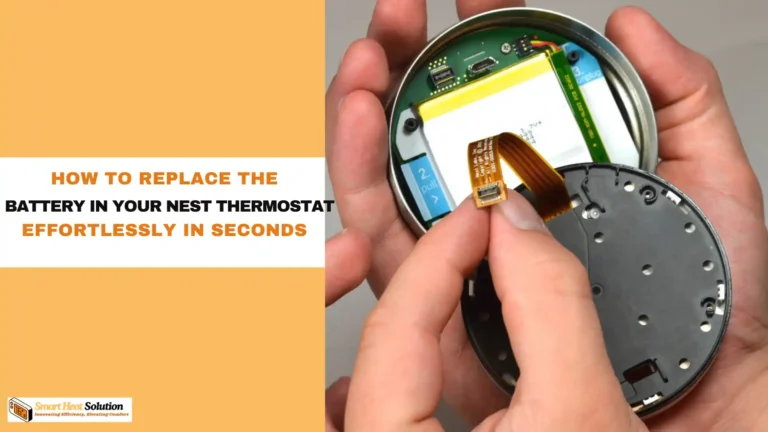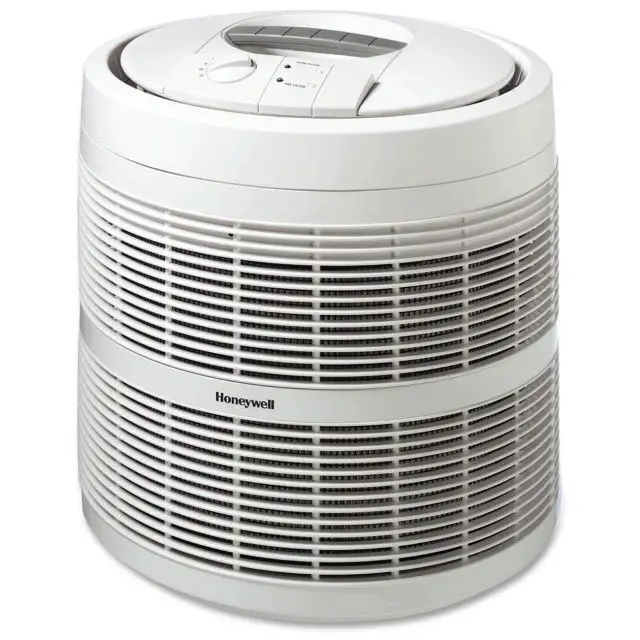7 Reason Why Your Pilot Light Lit But Burners Won’t Ignite
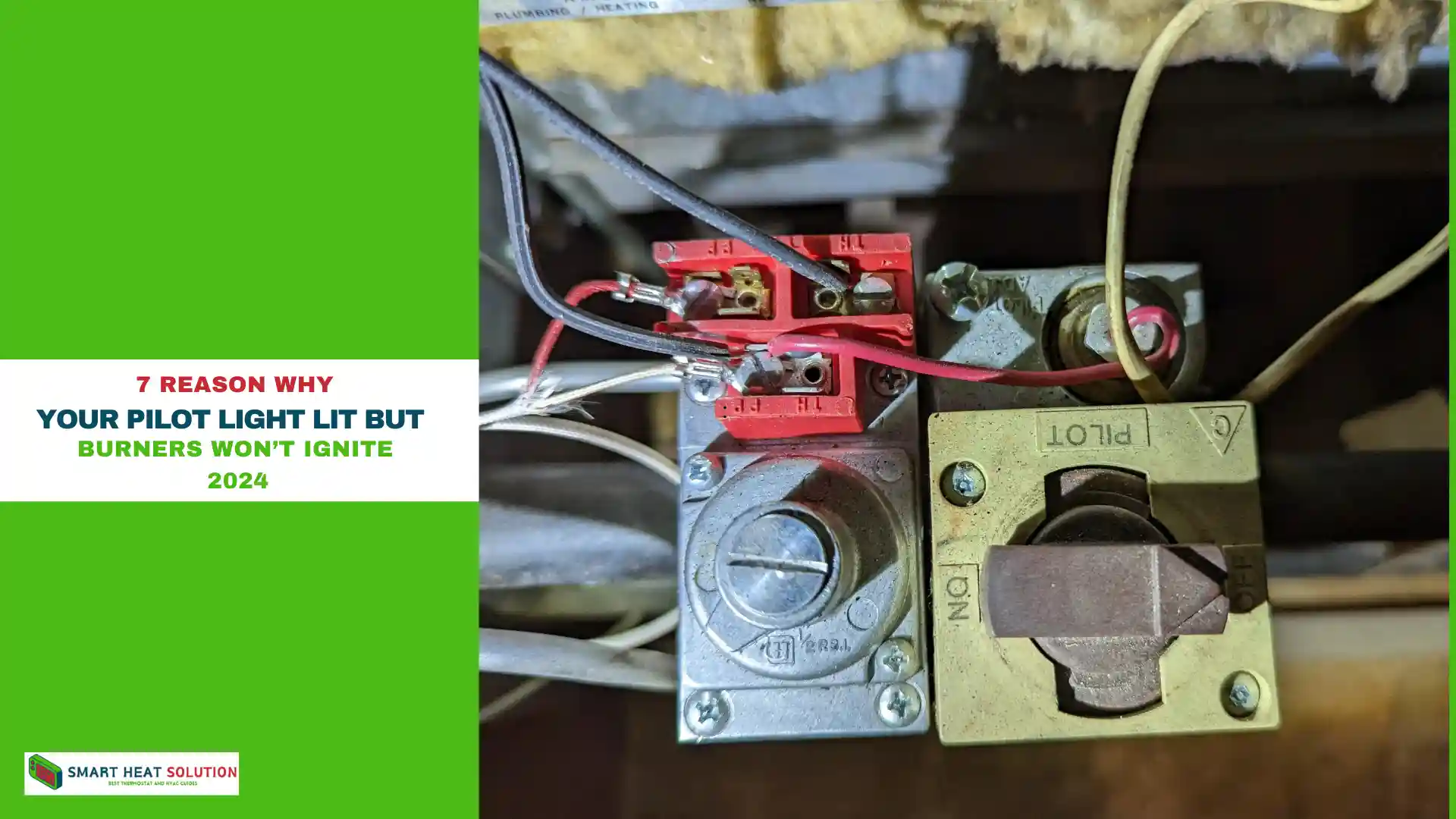
There’s nothing quite as frustrating as preparing to cook a meal or warm your home only to find that while the pilot light on your gas appliance is lit, the burners remain stubbornly unresponsive.
You might be wondering if something is wrong with your appliance, or if there’s a simple fix to this common dilemma.
In this article, we will delve into the reasons this may happen, guiding you through the troubleshooting process and ultimately helping you restore your appliance to full functionality.
Pilot Light Lit But Burners Won’t Ignite (Quick Answer)
If your pilot light is lit but the burners won’t ignite, it could be due to a few common issues:
Dirty Burners: Blocked burners can prevent ignition. Try cleaning them to ensure smooth gas flow.
Faulty Thermocouple: If the thermocouple isn’t working, it won’t let gas reach the burners.
Gas Valve Problem: A faulty gas valve may stop gas flow even if the pilot light is on.
Clogged Gas Line: Dirt or debris in the gas line can reduce gas flow to the burners.
Limit Switch: If a limit switch is triggered (due to overheating), it can stop the burners from lighting.
These are the main reasons; call a professional if troubleshooting doesn’t resolve the issue.
Understanding the Pilot Light System
A pilot light is a small flame that acts as a source of ignition for the burners of gas-powered appliances like furnaces, water heaters, and stoves. When you turn on a burner, gas flows to the burner nozzle, where it should ignite immediately if everything is functioning correctly.
At times, however, you may find that even though the pilot light is illuminated, the burners aren’t lighting up. Understanding the components of your gas appliance can shed some light on the issue.
3 Types of Furnace Ignition Systems
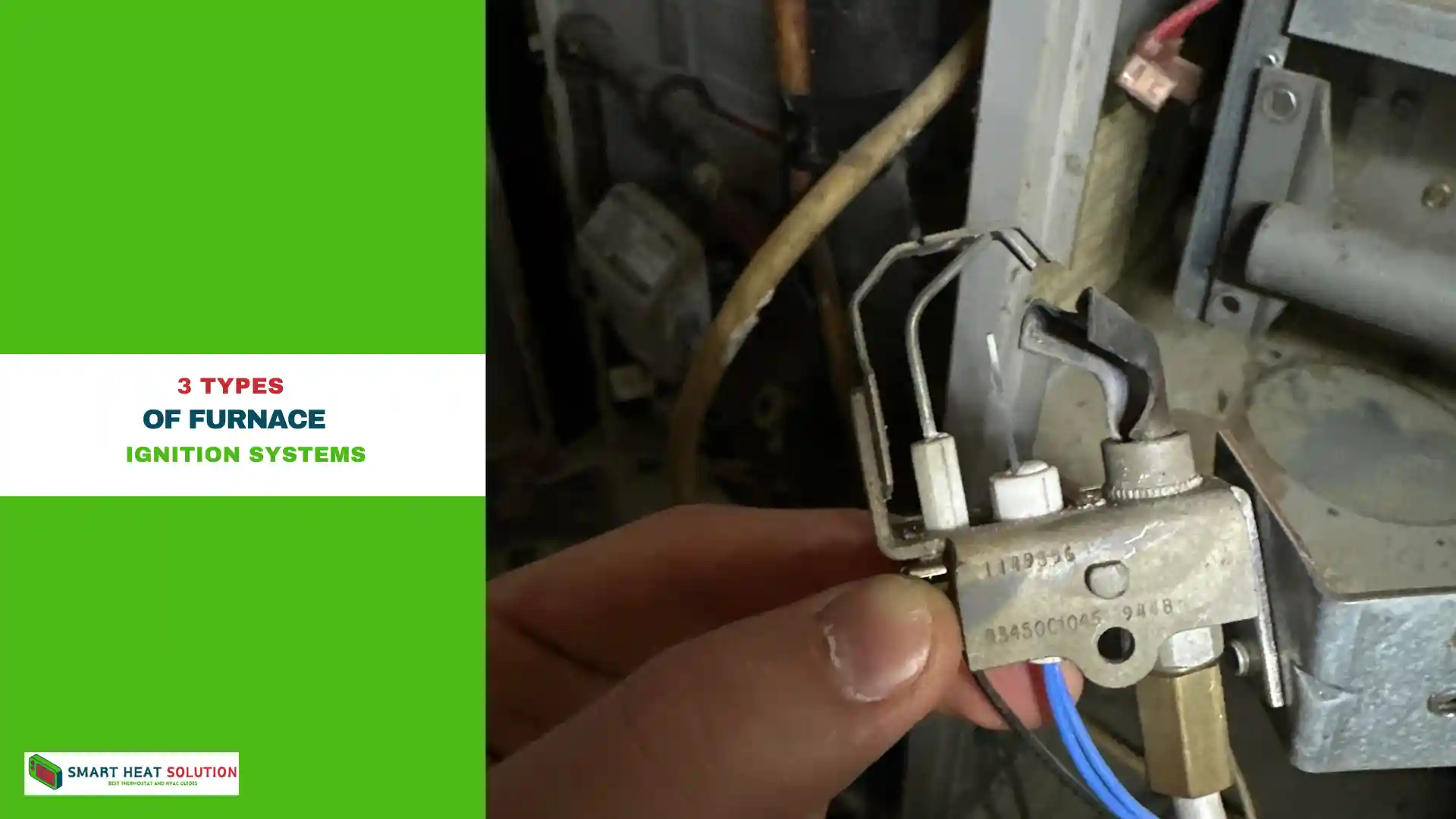
Learn about the three main types of furnace ignition systems:
1. Standing Pilot Light
A standing pilot light system uses a pilot light that is always on. The gas valve knob will read “OFF/ON/PILOT”. This system includes a thermocouple, a heat-sensing tool that ensures gas flows to the burners only when the pilot light warms it up.
- How it works: The pilot light remains lit, and when it heats the thermocouple, it allows gas to flow to the burners.
2. Intermittent Pilot Ignite
The intermittent pilot igniter is an electronic ignition system. Similar to the standing pilot light, it uses a pilot flame, but it only ignites when needed. The difference is that the pilot flame in this system is activated only when the thermostat signals for heat.
- How it works:
- The thermostat signals the electronic control board to start the process.
- The board activates the igniter, which lights the pilot flame.
- The pilot flame then ignites the gas, starting the burner cycle.
- Once the cycle is complete, both the burners and pilot flame turn off.
3. Hot Surface Ignition
A hot surface ignition (HSI) system uses a hot surface igniter, which has a fork-like attachment, a plastic base, and two wires. When the thermostat calls for heat, the igniter becomes hot and signals the gas valve to open, which then ignites the gas.
- How it works: The igniter heats up when the thermostat sends the signal, triggering the gas valve to open and light the burners.
7 Reasons Pilot Light Lit But Burners Won’t Ignite
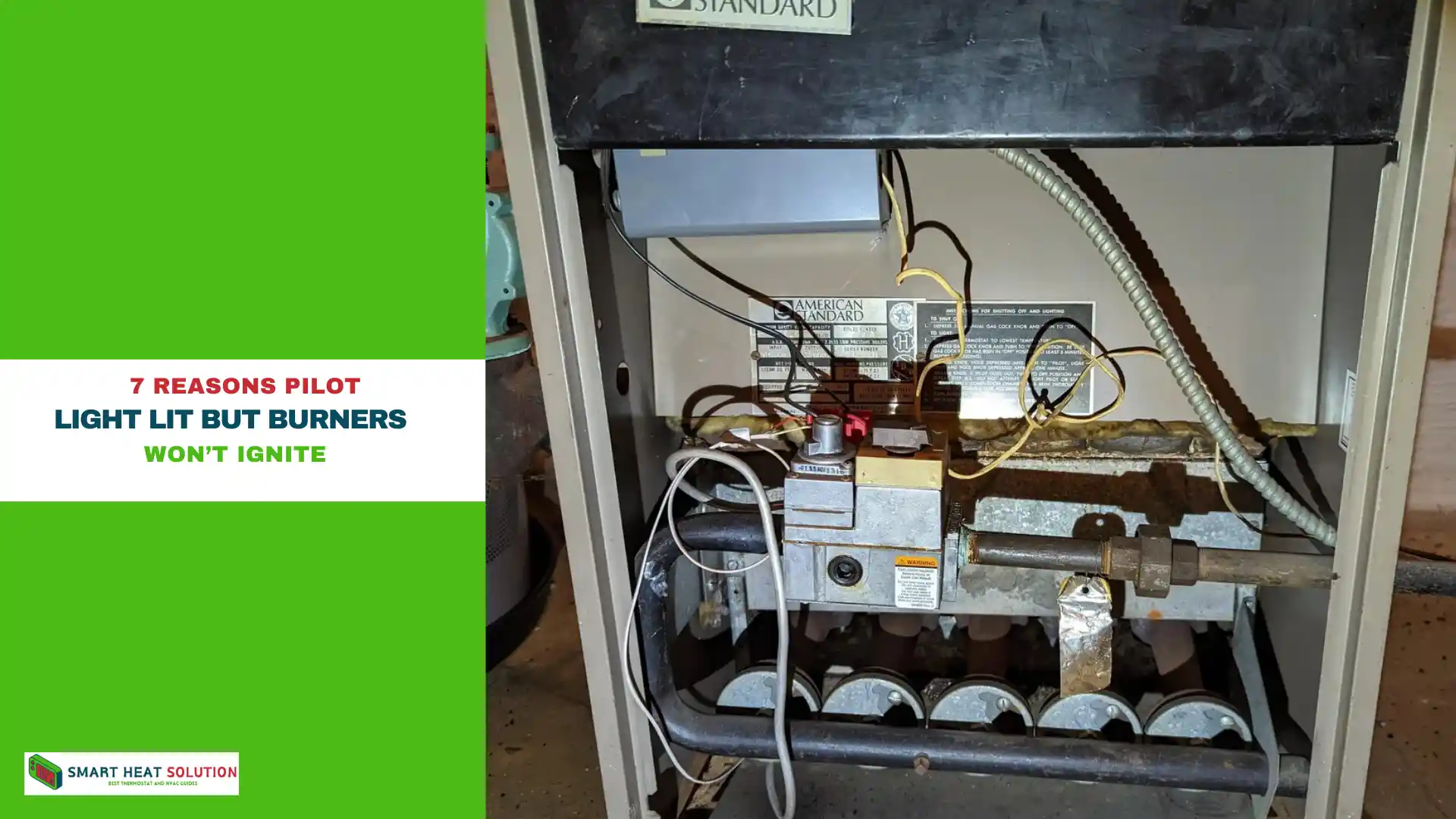
The following are the common reasons for Pilot Light Lit But Burners Won’t Ignite:
1. Residual Gas Inside the Water Heater
Before attempting to ignite your water heater’s pilot light, turn off the pilot control knob and allow the unit to sit idle for at least five minutes. This pause helps any residual gas inside the unit disperse, reducing the risk of ignition failure.
Why Residual Gas Matters:
When gas lingers in the lines, it can prevent ignition, as most water heaters are designed with safety mechanisms that stop the pilot from lighting when gas fumes are present. This precaution helps avoid accidental combustion inside the unit.
2. Automatic Igniter Isn’t Sparking
Modern water heaters often have a built-in automatic igniter, similar to those found in propane grills. When you press the igniter button, it should produce a small spark to ignite the gas and light the pilot flame. However, igniters can wear out over time.
Solution:
To check if the igniter is working, press the button and look for a spark. If no spark appears, you might need to ignite the pilot manually using a long lighter or match. Igniter replacements can also be done if necessary, but professional assistance is recommended if you’re unsure.
3. Clogged Pilot Tube
The pilot tube supplies gas to the pilot light. When it becomes clogged with debris or dirt, gas cannot reach the pilot, and ignition becomes impossible.
Fixing a Clogged Pilot Tube:
If you suspect a clog, try clearing it with a small needle or a thin wire. Gently remove any debris and attempt to relight the pilot. If this doesn’t solve the issue, contact a professional to avoid damaging the pilot tube.
4. Kinked Flex Gas Tube
The flex gas tube connects the main gas line to your water heater and delivers gas to both the burner and the pilot light. A kinked or damaged flex tube restricts gas flow, leading to an insufficient gas supply for the pilot light.
Spotting and Fixing a Kinked Tube:
Check the gas tube for any visible kinks or bends. If you see any, call a licensed plumber to repair or replace the tube. Attempting this repair yourself can lead to leaks or further issues with the gas line.
5. Dirty or Blocked Thermocouple
The thermocouple is a small metal rod positioned near the pilot flame. It’s responsible for detecting the pilot light, ensuring gas flow only when the pilot is lit. If the thermocouple is covered in dirt, it can’t accurately sense the flame, which causes the gas to shut off automatically.
Cleaning the Thermocouple:
Gently clean the thermocouple with fine-grit sandpaper to remove any dirt or grime. However, be cautious, as thermocouples are delicate and can easily become damaged. Professional cleaning or replacement is recommended to avoid further complications.
6. Faulty or Damaged Thermocouple
Sometimes, the thermocouple itself can become faulty or slightly bent away from the pilot light, preventing it from accurately detecting the flame.
Diagnosing a Faulty Thermocouple:
If the thermocouple is bent, carefully reposition it near the pilot flame to see if this resolves the issue.
If repositioning doesn’t work, the thermocouple may need to be replaced. Professionals can use a multimeter to check for the thermocouple’s electrical charge, indicating whether it’s functional. Without a charge, a replacement is necessary.
7. Worn-Out Control Valve
If your water heater’s pilot light still won’t ignite and none of the above issues are present, the control valve might be worn out.
This valve manages gas flow and houses the pilot control knob. Over time, the control valve may degrade, affecting its ability to regulate gas to the pilot.
Replacing the Control Valve:
A worn-out control valve needs to be replaced by a professional. Although this is a more involved repair, replacing the control valve is generally more affordable than replacing the entire water heater unit.
Safety Considerations
Always prioritize safety when dealing with gas appliances. If at any point you smell gas or suspect a gas leak, turn off the appliance immediately and leave your home. Call your gas supplier or emergency services for assistance. Remember, it’s always better to err on the side of caution.
FAQs
Why is my pilot lit but the main burner won’t light?
There are several reasons why your main burner won’t light even though the pilot is lit:
Thermocouple Issues: The thermocouple might be faulty or misaligned. It needs to be in direct contact with the pilot flame to generate enough voltage to open the gas valve.
Dirty or Clogged Burner: The main burner might be dirty or clogged, preventing the gas from flowing properly.
Gas Valve Problems: The gas valve might be defective or not opening correctly.
Airflow Issues: There might be insufficient airflow, which can prevent the main burner from lighting.
Why is my pilot light lit but heat not coming on?
If your pilot light is lit but heat is not coming on, consider the following:
Thermocouple or Thermopile Issues: These components might not be generating enough voltage to keep the gas valve open.
Faulty Gas Valve: The gas valve might not be functioning correctly.
Control Board Problems: The control board might be malfunctioning, preventing the system from signaling the main burner to light.
Airflow Restrictions: Ensure that there are no blockages in the vents or flue, which could restrict airflow and prevent the system from operating correctly.
Why is the pilot light on but the fire won’t start?
If the pilot light is on but the fire won’t start, it could be due to:
Thermocouple or Thermopile Problems: These components might not be generating enough voltage to open the gas valve.
Clogged or Dirty Burner: The main burner might be clogged with debris, preventing the gas from igniting.
Gas Valve Issues: The gas valve might be defective or not opening properly.
Airflow Problems: Ensure there is sufficient airflow to the burner.
Why does my gas fireplace pilot light but not the main burner?
If your gas fireplace pilot lights but the main burner does not, consider the following:
Thermocouple Issues: The thermocouple might not be generating enough voltage to open the gas valve.
Dirty or Clogged Burner: The main burner might be clogged with debris, preventing the gas from flowing properly.
Gas Valve Problems: The gas valve might be defective or not opening correctly.
Airflow Restrictions: Ensure there are no blockages in the vents or flue, which could restrict airflow and prevent the main burner from lighting.
How to tell if a thermocouple is bad?
To determine if a thermocouple is bad, follow these steps:
Visual Inspection: Check for any signs of damage, such as cracks, breaks, or corrosion.
Multimeter Test: Use a multimeter to test the voltage output of the thermocouple. With the pilot light on, the thermocouple should generate a voltage of around 25-30 millivolts. If the voltage is significantly lower, the thermocouple is likely faulty.
Functionality Test: Try lighting the pilot and seeing if the main burner lights. If the main burner does not light, the thermocouple might be the issue.
How to clean a flame sensor?
To clean a flame sensor, follow these steps:
Turn Off the Power: Ensure the power to the furnace or fireplace is turned off.
Locate the Flame Sensor: The flame sensor is usually a thin metal rod located near the burner.
Remove the Flame Sensor: Gently unscrew the flame sensor from its mounting.
Clean the Sensor: Use a fine-grit sandpaper or emery cloth to gently clean the surface of the flame sensor. Avoid using steel wool, as it can leave behind metal particles that could cause a short.
Reinstall the Flame Sensor: Screw the flame sensor back into its mounting.
Turn On the Power: Restore power to the furnace or fireplace and test the system to ensure it is functioning correctly.
Conclusion
Experiencing a scenario where your pilot light is lit, yet your burners won’t ignite can be annoying but is often manageable with the right approach.
By troubleshooting systematically, you can often identify the cause of the problem and either resolve it yourself or seek professional assistance.
Understanding these components and knowing what to look for can save you time and restore functionality to your appliances swiftly.
Whether it’s preparing a meal or heating your home, nothing should hold you back from enjoying the warmth and comfort of your gas appliance.
More resources: https://www.youtube.com/watch?v=0va_wvwfCBA

I’m Alan William’s, the founder of SmartHeatSolution.com. I am from California, USA, I’m passionate about innovative heating technologies and their impact on our homes and businesses. With a background in electrican and home repair , I aim to make smart, energy-efficient heating accessible to everyone. When I’m not writing, I’m likely interested in all the thermostat brands and their new technnology. Thanks for stopping by!

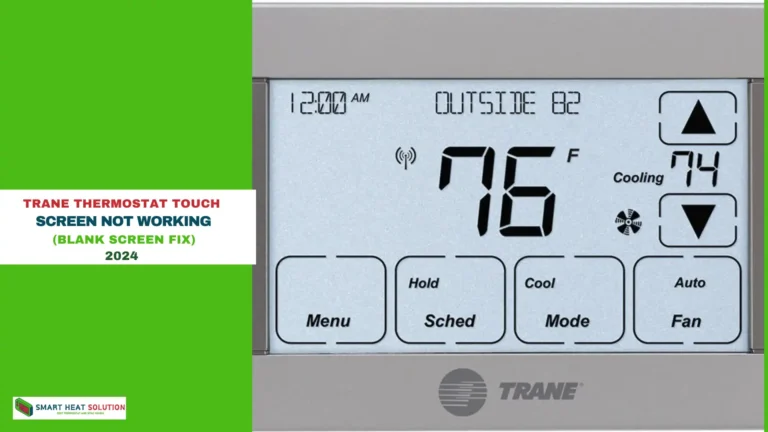
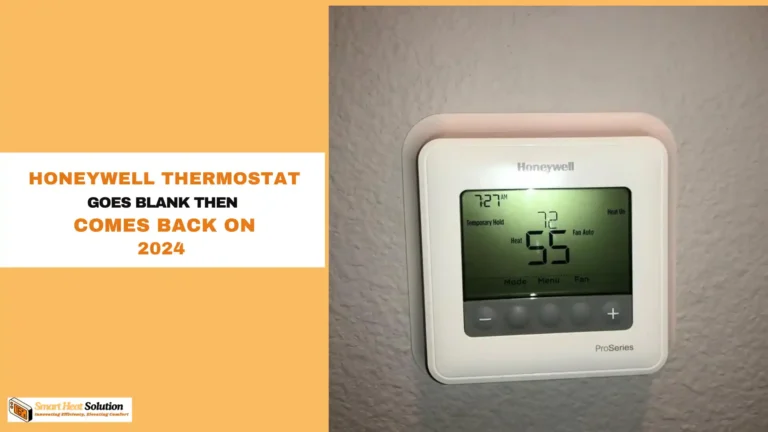
![Honeywell Purge Light Blinking? [Causes & Solutions] 12 Honeywell Purge Light Blinking? [Causes & Solutions]](https://smartheatsolution.com/wp-content/uploads/2024/10/tinywow_2_66209135-768x432.webp)
